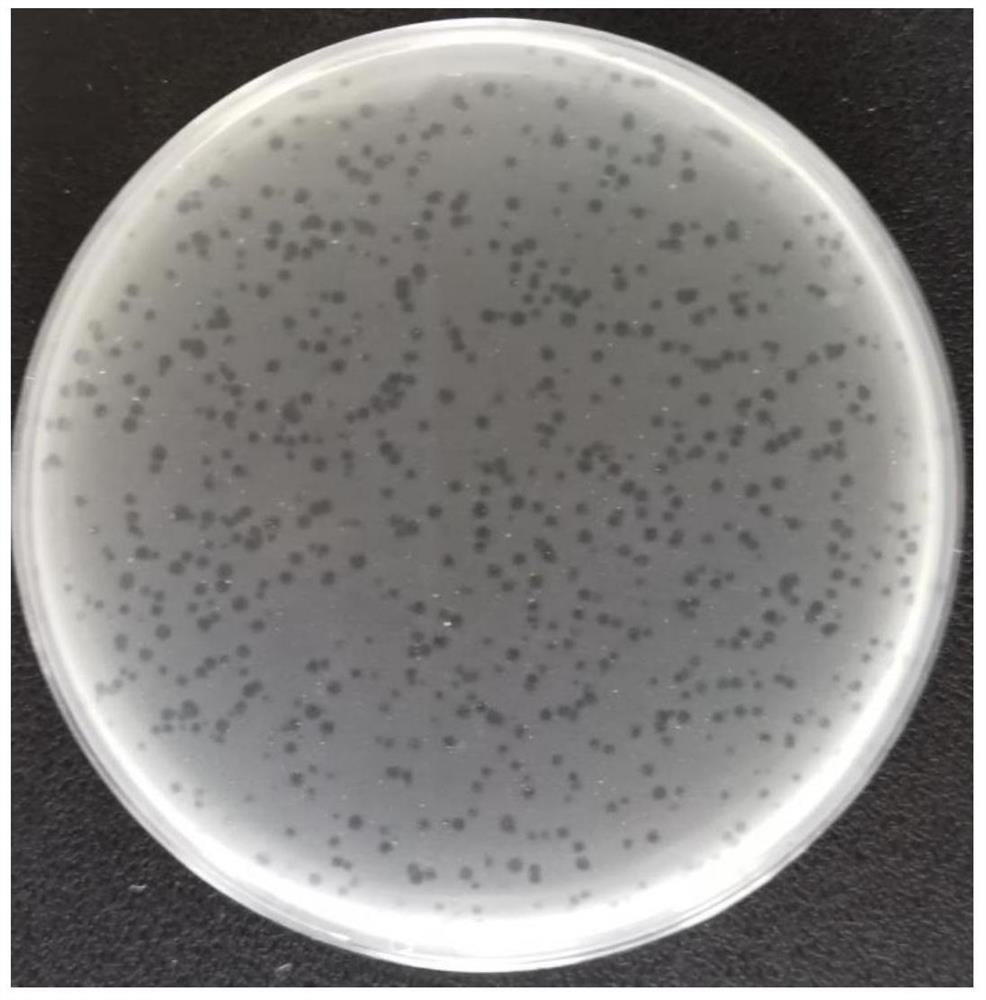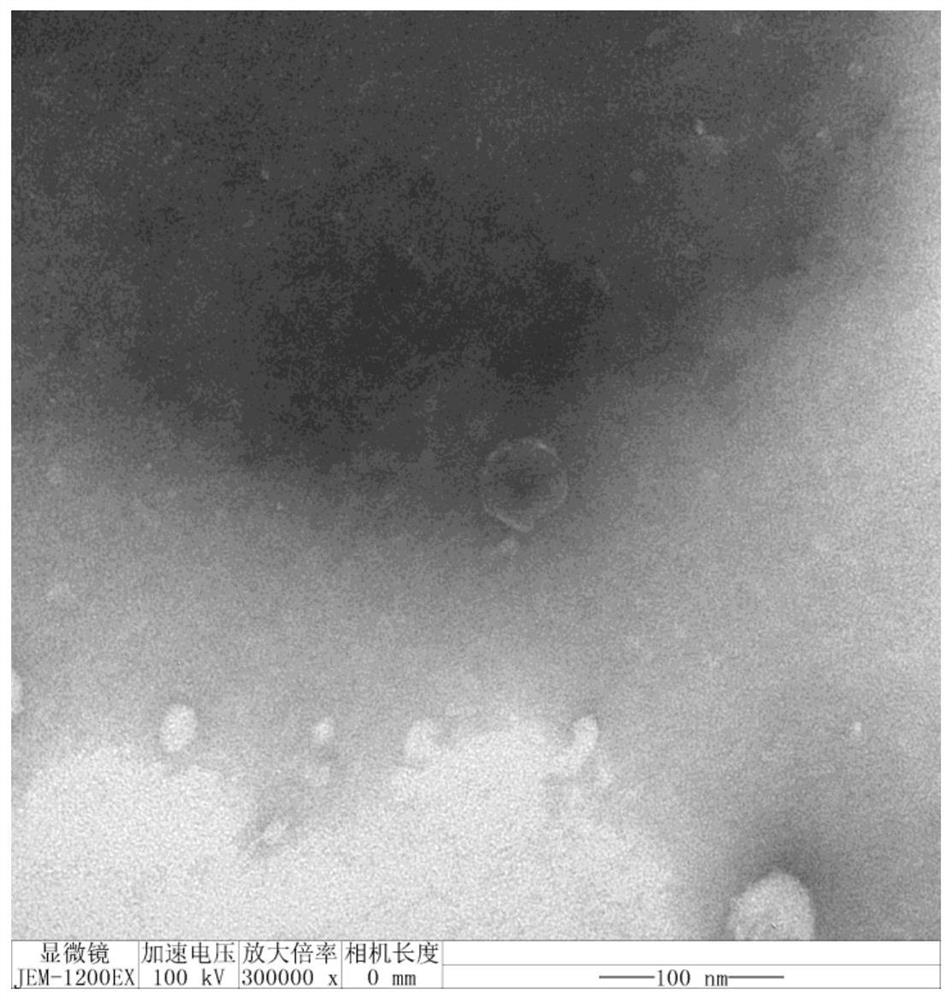A stable and efficient Salmonella virulent phage rdp-sa-21004 and its application
A technology of RDP-SA-21004 and Salmonella, which is applied in the direction of phage, virus/phage, medical raw materials derived from virus/phage, etc., can solve the problems of drug resistance of bacteria, untimely treatment, ineffective medication, etc., and achieve a wide cracking spectrum , good acid and alkali tolerance, and strong cracking ability
- Summary
- Abstract
- Description
- Claims
- Application Information
AI Technical Summary
Problems solved by technology
Method used
Image
Examples
Embodiment 1
[0045] Example 1 Isolation and identification of pathogenic Salmonella BS-20079
[0046] Sampling from the diseased farm, aseptically taking the diseased poultry liver, streaking on the Salmonella color selective medium, and after culturing at 37°C for 18-24 hours, it will form a round, flat, neat edge, smooth and moist surface on the medium. The lavender colonies were picked, and the typical colonies were picked for streak purification for 3-5 times, then single colonies were picked and inoculated into 5 mL of LB liquid, and cultured with shaking at 37°C and 200 rpm for 4-6 hours to obtain a uniform turbid bacterial suspension. Through 16S rRNA molecular identification and serotype identification, it was determined to be a pathogenic Salmonella, named BS-20079, and stored in a -80°C refrigerator.
Embodiment 2
[0047] Example 2 Isolation and purification of phage RDP-SA-21004
[0048] (1) Feces treatment: Take feces from the farm, weigh 3 g of diseased poultry livers, add them to 10 mL of SM buffer, grind and soak them overnight, then centrifuge the overnight leachate at 10,000 rpm for 5 min, take the supernatant and filter it with a 0.22 μm filter. Store the effluent at 4°C for later use;
[0049] (2) Phage enrichment: add 0.2 mL of bacterial suspension and 1 mL of filtrate to 5 mL of LB broth, shake and culture at 37°C at 200 rpm overnight, then centrifuge at 10,000 rpm for 5 min, filter the supernatant with a 0.22 μm filter, and filter out liquid backup;
[0050] (3) Phage separation: The double plate method was used to separate the phage, and 0.1 mL of the host Salmonella suspension was mixed with 0.7% soft agar and spread on the LB plate. After the soft agar solidified, 0.1 mL of the filtrate was placed on the On the plate, let it stand until the mixture is absorbed. After cul...
Embodiment 3
[0053] Example 3 Morphological observation of bacteriophage
[0054] Take 20 μL of the liquid containing the crude phage particles and drop them on the copper mesh, let it settle naturally for 15 minutes, and remove the excess liquid from the side with filter paper. Remove the staining solution from the side, and observe the phage morphology with an electron microscope after the sample is dry, such as figure 1 shown.
[0055] Depend on figure 1 It can be seen that the phage RDP-SA-21004 has a polyhedral three-dimensional symmetrical head, which wraps the nucleic acid, with a diameter of about 57.259 nm, a tail of about 112 nm in length, a tail sheath, and the neck connects the head and the tail. According to the ninth report on the classification of viruses by the International Organization for Taxonomy of Viruses, the phage is classified as Myoviridae in the order Auroviridae.
PUM
| Property | Measurement | Unit |
|---|---|---|
| diameter | aaaaa | aaaaa |
Abstract
Description
Claims
Application Information
 Login to View More
Login to View More - R&D
- Intellectual Property
- Life Sciences
- Materials
- Tech Scout
- Unparalleled Data Quality
- Higher Quality Content
- 60% Fewer Hallucinations
Browse by: Latest US Patents, China's latest patents, Technical Efficacy Thesaurus, Application Domain, Technology Topic, Popular Technical Reports.
© 2025 PatSnap. All rights reserved.Legal|Privacy policy|Modern Slavery Act Transparency Statement|Sitemap|About US| Contact US: help@patsnap.com



